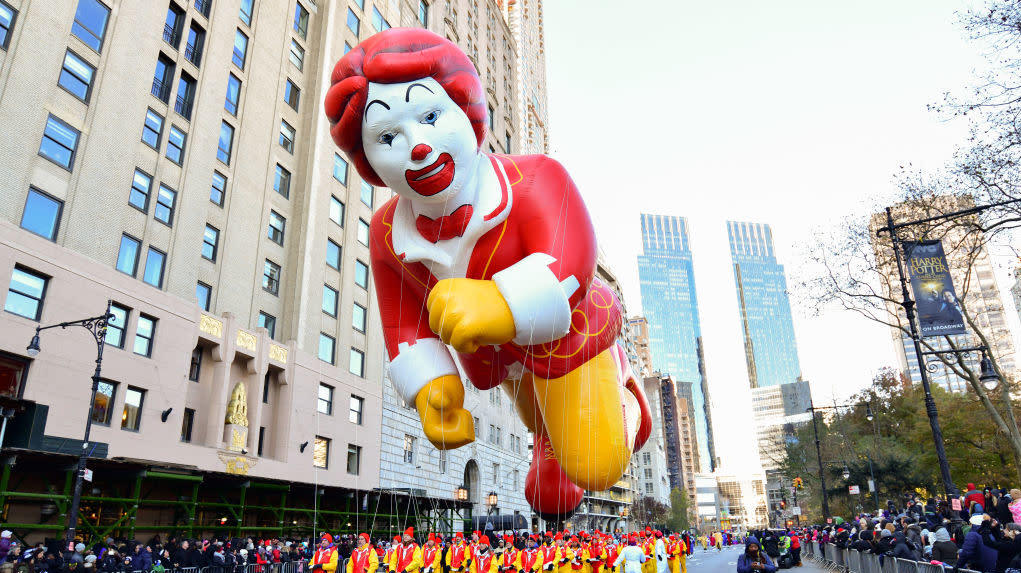Why Don't We See More Of Ronald McDonald?
I've only gotten as far as the second episode of HBO's McMillions, a six-part documentary series about the fraud investigation surrounding McDonald's Monopoly promotion, but already, the series has shown plenty of archival footage from the '80s and '90s featuring Ronald McDonald yukking it up at promotional events. It struck me, because while I remember seeing (and hearing) Ronald in dozens of commercials and at various franchise openings throughout my childhood, I only now realize that it's been years since I've seen Ronald in any capacity, barring one massive inflatable cross-legged Ronald that sat atop a McDonald's location on La Cienega Boulevard in Los Angeles for a stretch of time in late 2017. Thanks to an article in CBR this week, I have a better idea of how and why the infamous clown faded from public view.
In "Lonely Ronald: Why McDonald's Retired Its (Creepy) Clown Mascot," Zachary Kandell unpacks the various factors that have plagued the fast food mascot in recent decades. Most obviously, there's the fact that most Americans just don't like clowns. (Vox even has data on the subject.) It's hard to sell burgers by parading around a figure that inspires wariness in half of all customers and deep fear in every 20th customer or so. This clown-related dread only got worse in 2016, when a rash of (possibly evil?) clown sightings sowed discord across the country, at which point a McDonald's spokesperson said in a statement, "McDonald's and franchisees in the local markets are mindful of the current climate around clown sightings in communities and as such are being thoughtful in respect to Ronald McDonald's participation in community events for the time being." Good on them for not adding to the panic, but that "for the time being" is now four years and counting. (A HelloGiggles article is often cited in claims that the character has been "officially retired," but it's pretty clear from the 2016 McDonald's statement that the de-emphasis on Ronald was intended as a temporary measure.)
Make no mistake: Ronald is still a pretty active mascot. He was featured in both human and balloon form at the 2019 Macy's Thanksgiving Day Parade, and he's a fixture at McDonald's charity events. He shot some hoops at the 2018 McDonald's All American Games in Atlanta. He leads a rich life. But if and when McDonald's chooses to revive him in a big way, it could be an uphill battle, because now fast food and junk food brands with playful mascots aimed at children face harsher scrutiny. Many experts believe that this child-oriented marketing contributes to the nation's high obesity rate, but as recently as 2011, McDonald's defended its use of the character, explaining that Ronald is "an ambassador for good."
That said, as CBR notes, with the success of the "I'm Lovin' It" campaign that launched in 2003, McDonald's has continued to primarily focus its marketing towards adults, with advertisements showing successful Millennials in upscale settings enjoying sandwiches, or often just imagery of the food itself. The CBR article scratches the surface of a much bigger story, one that the internet loves to check in on from time to time, but it gives us a great excuse to fall down the rabbit hole of McDonald's lore. And it begs the question: Will McDonald's keep Ronald in this promotional purgatory forever, or will he have another star turn sometime this century?
